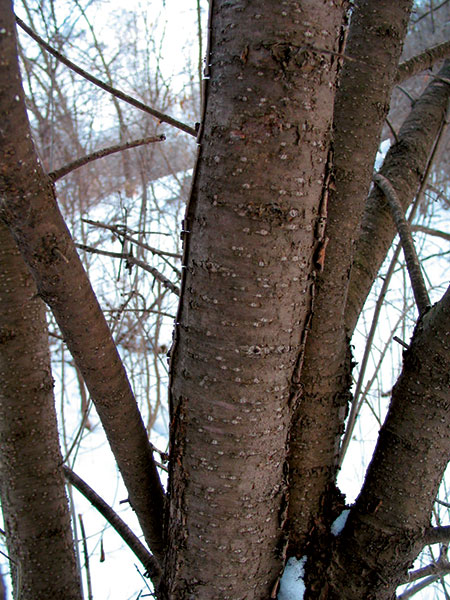Buckthorn Removal

Buckthorn is one of the most invasive species found in Minnesota.
Why is Buckthorn so bad?
- Forms a dense layer that outcompetes our native vegetation
- Resists native insects and diseases
- Leaves continue to photosynthesis later into the fall than native vegetation
- Sends several sprouts from the stump after being cutting down
Why are herbicides used?
Merely cutting Buckthorn down makes the problem worse. The root system stays alive and tells the stump to send out new sprouts. The new sprouts grow very quickly (4 to 5 feet in one year) and start to fill the area more heavily than before. This can make trying to cut it down again much more work than the first time. Herbicide greatly reduces the amount of regrowth. It allows us to keep the Buckthorn at a manageable size and population in the future without having to continuously cut it out every year.
When are herbicides applied?
The stumps should be treated shortly after the Buckthorn is cut down. Spraying the leaves can be done anytime during the growing season. A fall inspection and spray is always a good way to spot and isolate the Buckthorn because they hold their leaves longer. Continuing to have the area sprayed 1-2 times yearly is the best way to deal with young seedlings that will undoubtedly continue to sprout for years to come.
What type of herbicide is sprayed?
Stump/Bark Treatment: Garlon 4 and Pentra-Bark® Leaf Treatment: Garlon 4 and Water
Removal Option A:
- Cut & remove all Buckthorn taller than waist level
- Treat stumps with highly concentrated herbicide
- Spray leaves of all remaining Buckthorn
- Return in the fall for second spraying
- Return next summer and fall for follow-up treatments
Removal Option B:
- Apply a bark penetrating herbicide mixture to the trunks
- Spray leaves of all smaller Buckthorn
- Either remove dead Buckthorn or leave standing
- Return in the fall for second spraying
- Return next summer and fall for follow-up treatments
